Wafflelicious
Located in the lower mainland of British Columbia, the Wafflelicious food truck provides an assortment of waffle treats and natural drinks.
By offering a convenient mobile online solution for pre-ordering food and scheduling pick up they can reduce overall wait times for all customers and increase productivity. This increase in capacity allows for the maximization of daily sales.
Duration: 1 Month
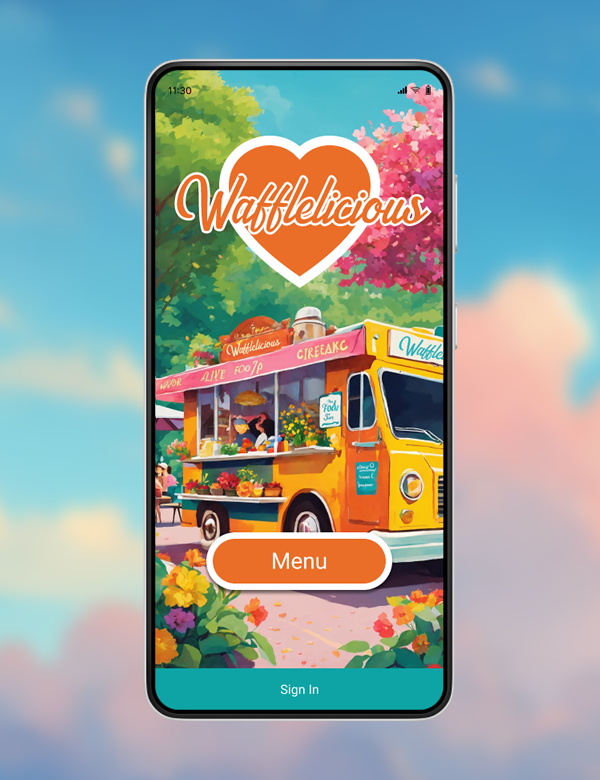
Project Overview
The Problem
Long lines during busy periods discourage people from ordering from the food truck thus cutting into the day’s potential sales. As well, rush periods cut into their ability to quickly fulfill all the orders in a timely manner.
Due to the compact size of their truck and tight margins, adding extra staff for the short daily rushes is not cost efficient or practical.
The Goal
The goal is to design a mobile app solution that enables customers to pre-order their food and schedule a pickup time. This will reduce customer wait times and free up resources, allowing the food truck staff to process more orders efficiently.
My Role
UX Designer and Researcher designing a food ordering app from concept to delivery.
Responsibilities
- User Research: Conducting interviews and usability studies
- Wireframing: Paper and Digital
- Prototyping: Low and High Fidelity
- Accounting for accessibility
- Iterating on Designs
The Stakeholder
Marie Doucet, owner of Wafflelicious
Marie’s journey began in her parents’ family restaurant in Vancouver. There she was immersed in the bustling world of running a restaurant.
At 26 Marie decided she wanted to have her own business and saw a food truck as an opportunity that did not require a huge upfront investment. Using saved up money, and with help from her family, she purchased a second hand food truck that she converted into a cozy mobile eatery serving up delightful waffle dishes and natural fruit juices.
Two years into the business, she’s enjoying a steady flow of customers, but like any small business she’s eager to increase profitability. Although she has aspirations to grow by opening a second truck and hiring more staff, the high costs involved have kept those plans on hold for the moment.
So in the meantime Marie is exploring alternative methods such as online sales to boost her revenue and profits.

User Research
Summary
There were two lines of inquiry pursued for this project. The first being into the experience customers had with ordering from a food truck. The second being their experience and expectations with ordering food from a restaurant online.
Having conducted a number of personal interviews as well as conducting online research we were able to pinpoint the main common needs and wants the users had.
Research Questions
Sampling:
- What is your overall impression of using food ordering apps?
- What motivates you to use a food ordering app?
- How often do you use food ordering apps?
- How easy is it to place an order using food ordering apps?
- Have you ever had any issues while placing an order?
- How satisfied are you with the options to customize your order (adding special instructions, modifying ingredients, etc.)?
- What features do you like the most in the food truck ordering app you use?
- Are there any features that you don’t use or find unnecessary?
- Are there any features you wish were available?
- How helpful do you find the notifications (e.g., order status, food truck location updates) provided by these apps?
- Is there any additional information you would like to add?
Pain Points
Food Truck: Wait times to order and receive food
The main complaint about food trucks is the long wait time during rush periods, which can lead to frustration and potential customers leaving before ordering. Large groups contribute to both extended wait times to place orders and for the food to be prepared and served. This situation is especially stressful for individuals with limited time for their lunch break.
Food Truck: Complications during ordering
Noise and other frustrations often complicate the ordering process. With everyone in a rush, it increases the chances of errors occurring in the order or during the preparations. When an order is incorrect, it adds frustration for everyone and consumes time that could be better spent enjoying the food.
Restaurant App: Complicated and busy
Food ordering apps that are cluttered, lack intuitiveness, or present navigation challenges can be a hassle. An over abundance of choices and options increase the frustration of ordering quickly and easily.
Restaurant App: Setting up yet another app
Setting up and answering a number of personal questions before being able to use “yet another ordering app” was considered a hassle. Apps needed to serve a real purpose before people would consider installing.
Personas
Persona 1 – Sophia
Problem statement: Sophia is a financial advisor who needs to order lunch quickly because of her tight schedule at work.

Sophia
Age: 27
Education: Bachelor’s Degree in Finance
Location: Port Moody, BC
Family: Single
Occupation: Financial advisor
“I don’t want to waste my short lunch break waiting in a long line. It’s my time to relax.”
Goals
- To be able to fully enjoy the lunch break away from work.
- Make it a special day, and waffles for lunch are a delightful treat.
- Spend time with friends while getting some sun.
Frustrations
- Lunch time is often busy.
- Prices are higher than they were a year ago.
- Ordering can be difficult if it’s too noisy from people and traffic.
- Sometime the order isn’t correct and fixing it causes delays.
- Phone is bloated with endless apps, why does she have to install another one just to order waffles?
Sophia works as a financial advisor at a community bank in Port Moody. Her days are filled with meetings, deadlines, clients, and writing reports. Lunch breaks are a welcome break from the work, and she often finds herself looking for something that makes her feel good. On sunny days she likes to make her way to the local food trucks.
Persona 2 – Richard
Problem statement: Richard is a local owner who needs to make large lunch orders because he’s treating his employees for their hard work.
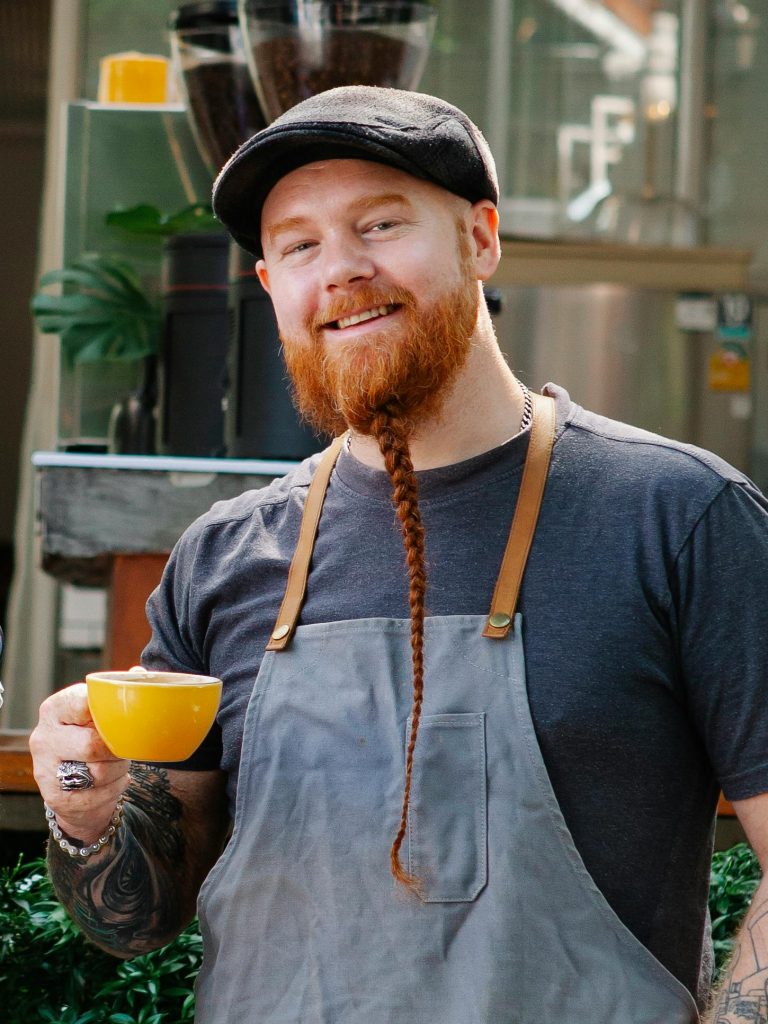
Richard
Age: 49
Education: University
Location: Coquitlam, BC
Family: Married
Occupation: Owner of a body shop
“Ordering lunch for the team shouldn’t be a hassle. It needs to be quick and efficient.”
Goals
- To treat the employees with a fun lunch treat.
- To organize and pick up 12 individual meals without hassle.
- Appreciates an efficient ordering system and fast turn around.
Frustrations
- Long waits cutting into the work day.
- Errors with the orders, which happens from time to time.
- Organizing 12 different orders is complicated and takes a considerable amount of time to accomplish.
Richard owns a mid size body work shop with a team of 12 employees. He values employee morale and enjoys occasionally treating them to lunch. Richard lets his employees choose from the local restaurants and food trucks. Frequently the staff picks the Wafflelicious Waffle Food Truck because the food is delicious and fun.
User Journeys
Journey Map: Sophia
Goal: To enjoy a special waffle treat for her lunch.
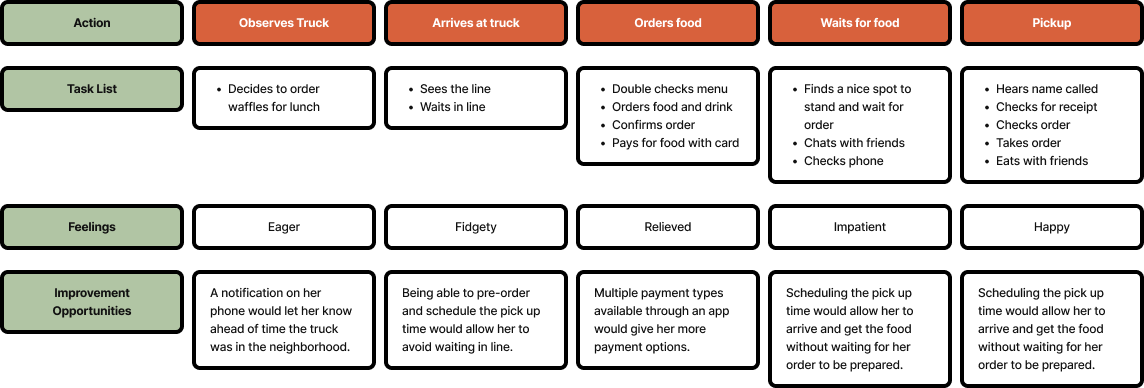
Journey Map: Richard
Goal: To treat his employees at his local body shop with a fun lunch treat for their hard work during the week.
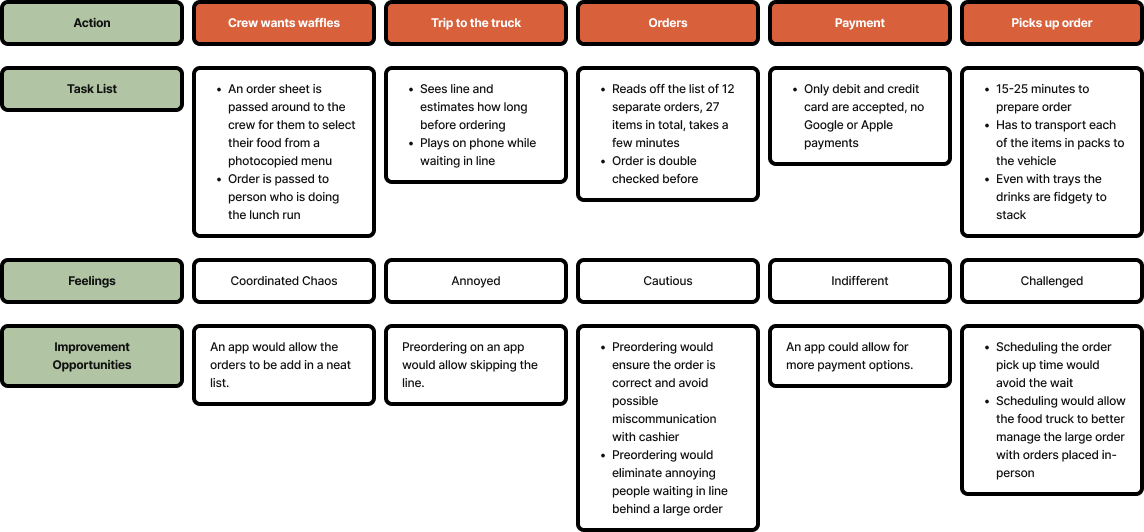
Competitive Analysis
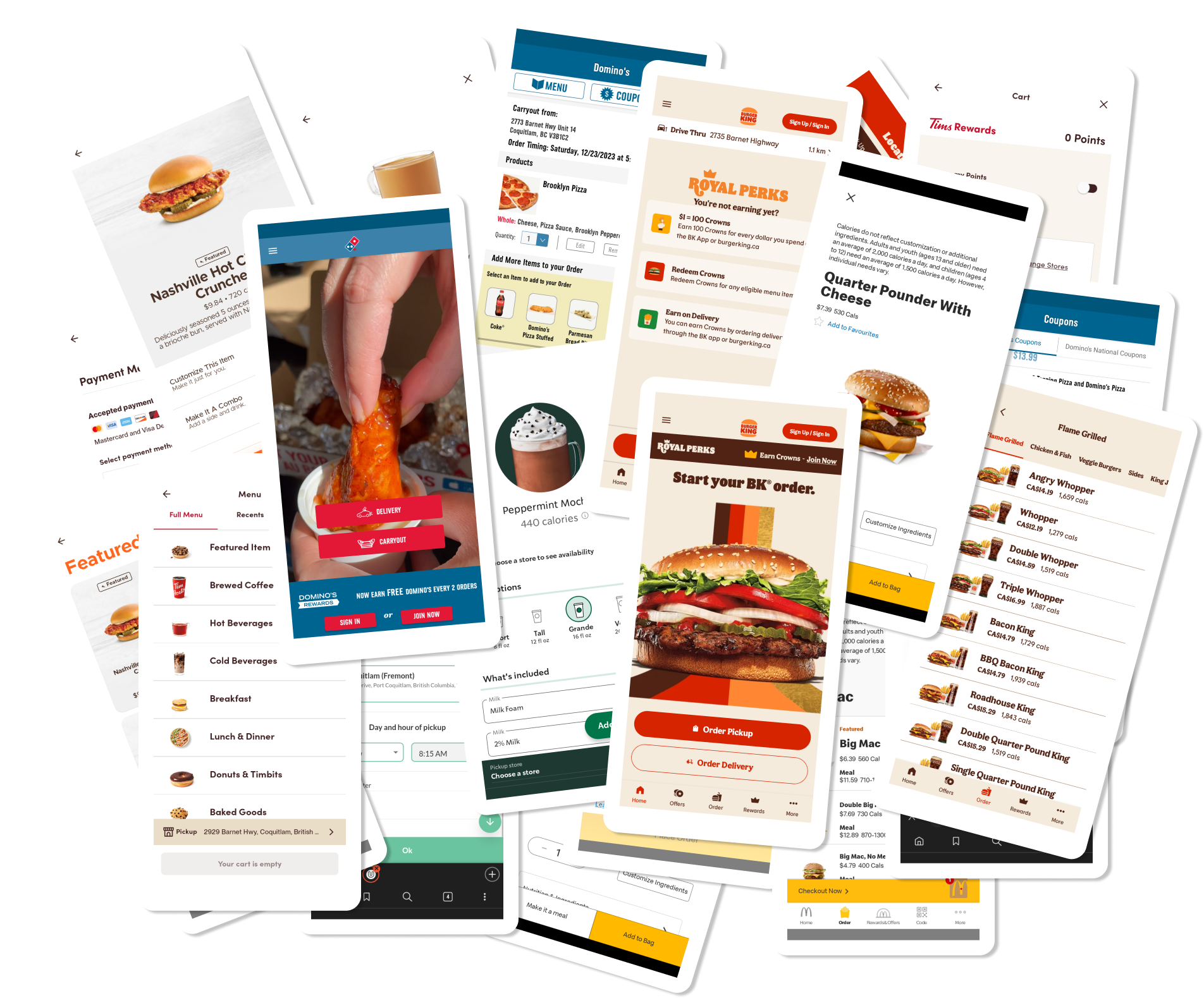
Competitors
The main focus of the research went into restaurant mobile apps as they most resembled the needs of the client. A number of apps for high profile restaurants were tested and analyzed to see how they handled the user experience for their customers.
Apps chosen: McDonalds, Burger King, Starbucks, Dominoes, A&W, Tim Hortons, and Wendys amongst others.
While open to all results, of keen interest were a few key features:
- User flow, how they directed a customer from when they opened the app to their completing an order.
- User engagement, how they made the experience as easy and uncomplicated as possible.
- How they encourage customers to return to the app for future sales.
- Features that might distract or frustrate the average user.
- Ease of setting up.
Results & Recommendations
From the many features built into the various apps we selected those that streamlined and simplified the process of ordering waffles and drinks from the food truck.
- Clean and uncluttered pages at every step of the process.
- Anchored buttons for a clear path forward in the ordering process.
- Simple sign-up process.
- User favorites feature.
- Easy-to-use scheduling system for both ASAP ordering and future orders.
- Suggested food add-ons.
- Rewards program for repeat customers.
- Optional tipping feature.
- Location information.
- Concise pickup instructions.
Starting the Design
User Flow
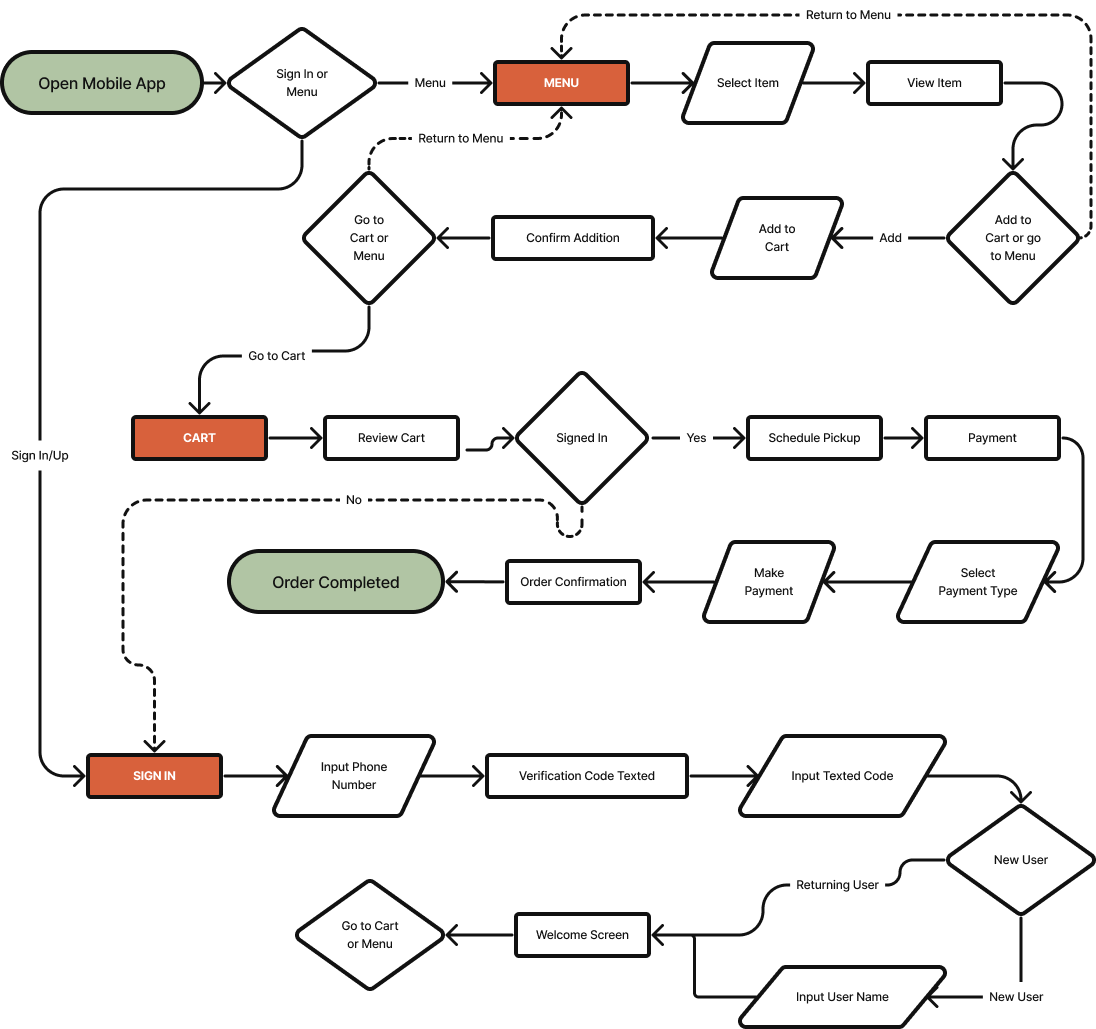
Information Architecture
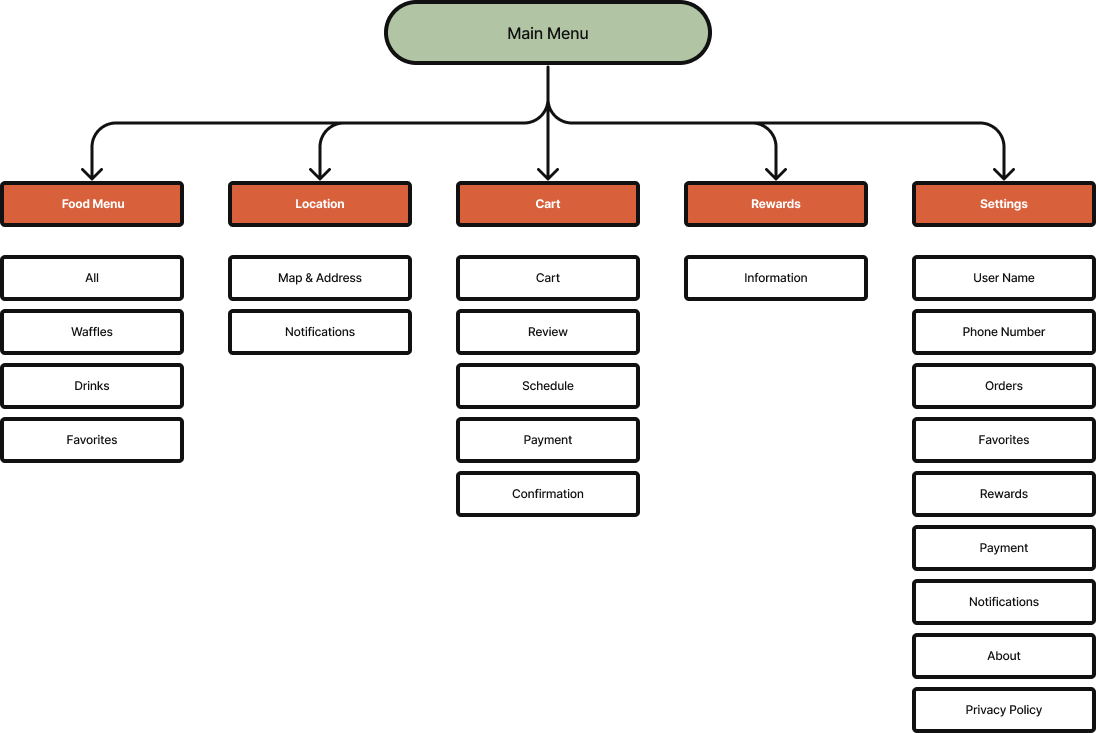
Paper Wireframes
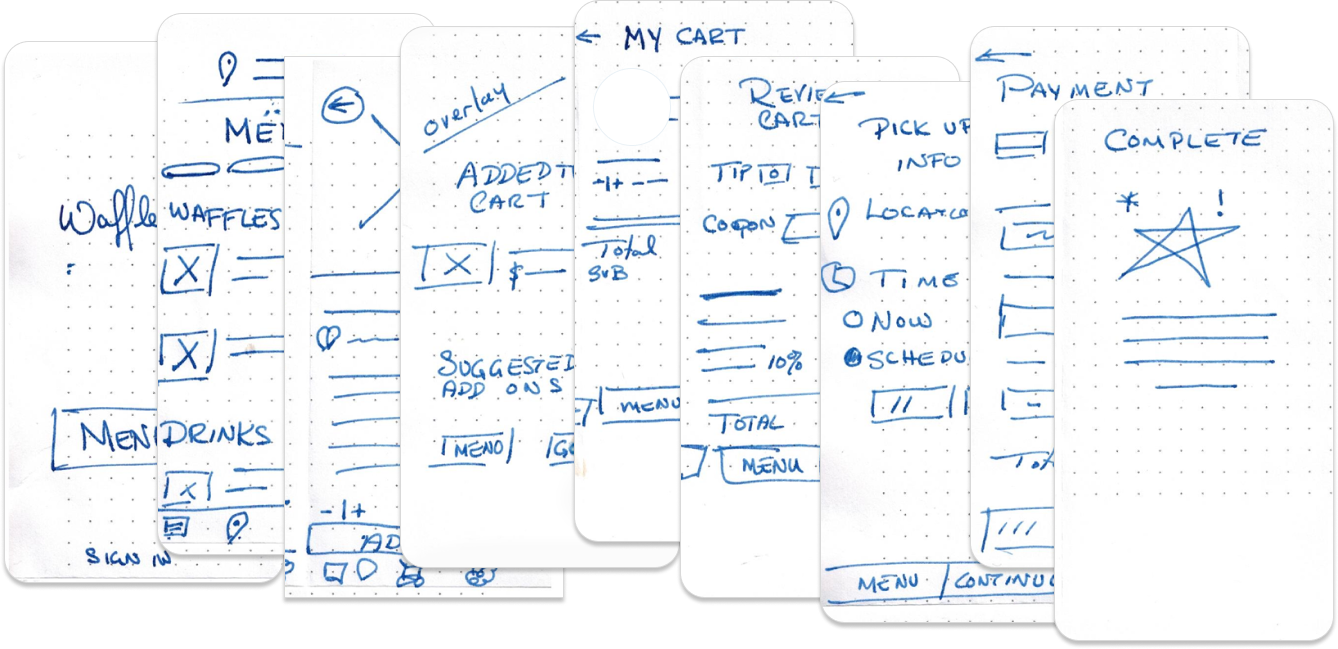
Wireframe Testing
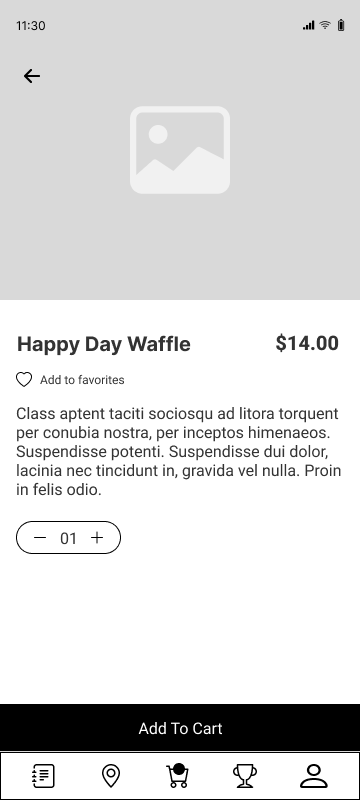
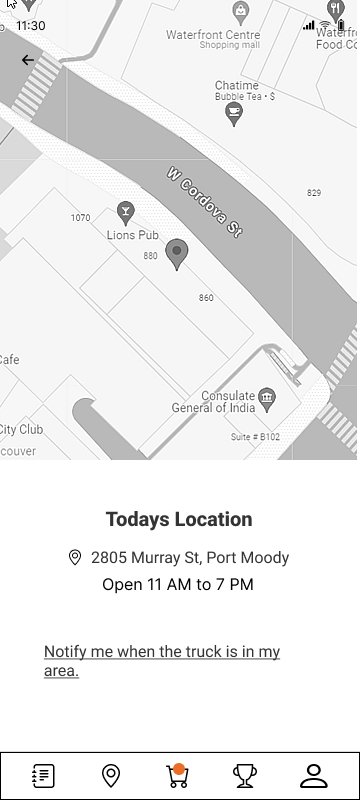
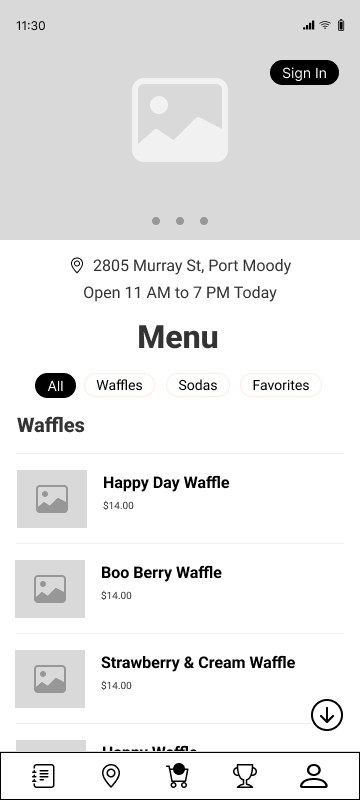
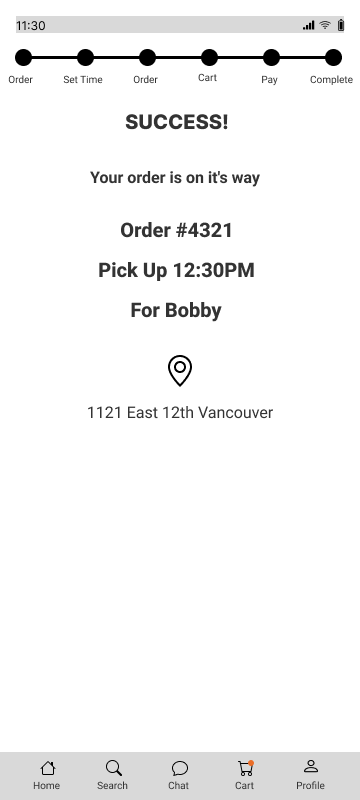
Low-fidelity Prototype
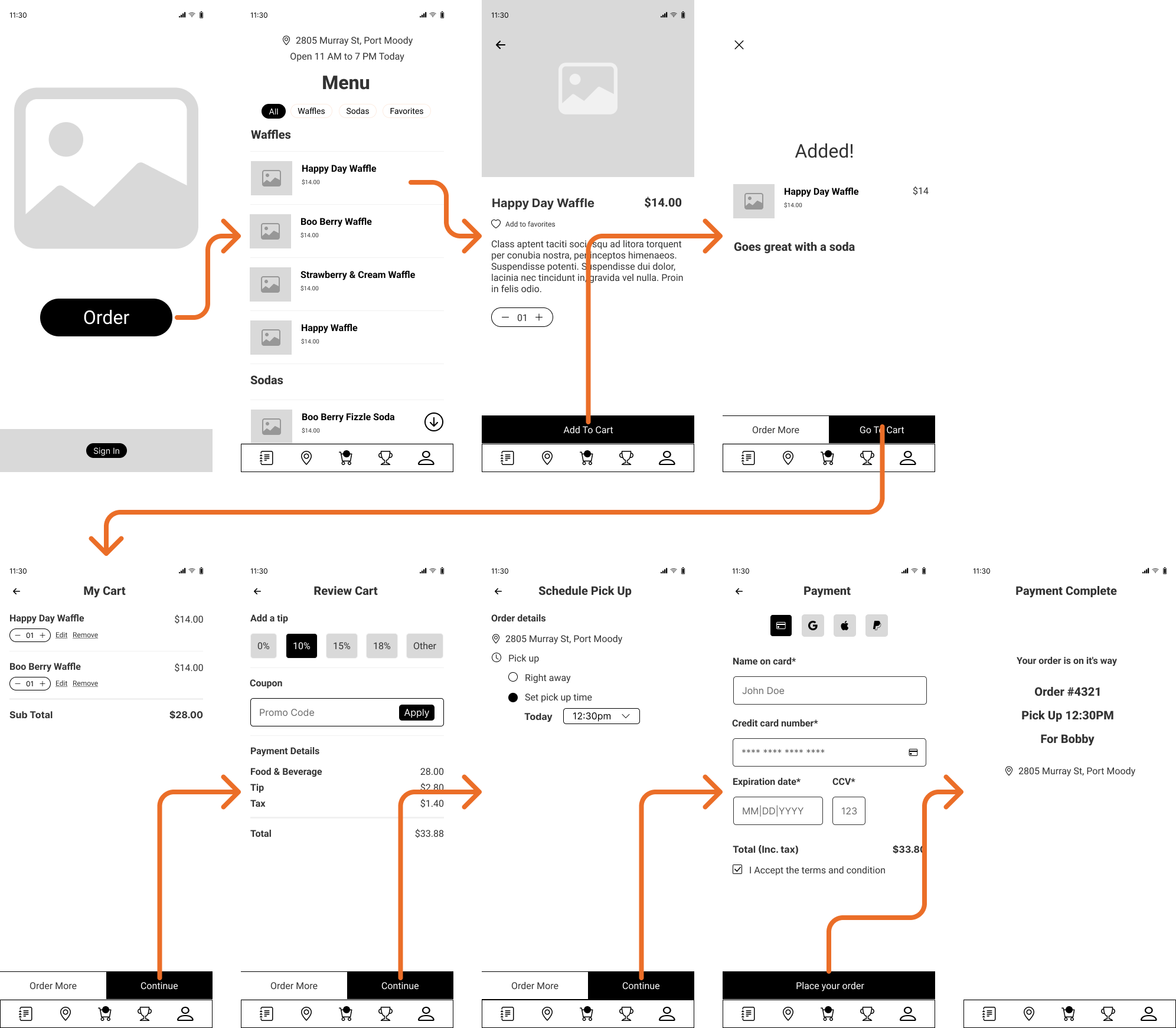
Usability Study: Findings
After a few design iterations, testers were able to navigate key features within the app smoothly. Selecting, ordering, and paying for their meals became straightforward and intuitive. The anchored buttons and clean design facilitated an effortless ordering journey.
The Design
Typography & Colors


#FFFFFF

#333333
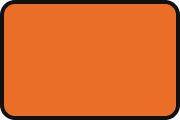
#EB6E28

#0EA4A5
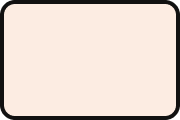
#FCECE2
High-fidelity Mockups
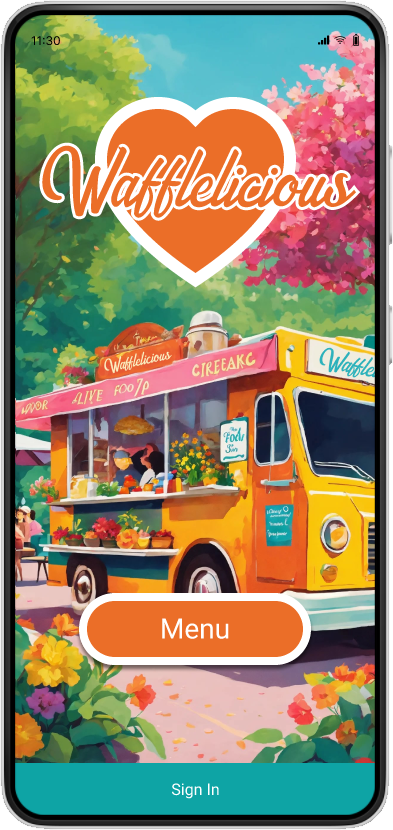
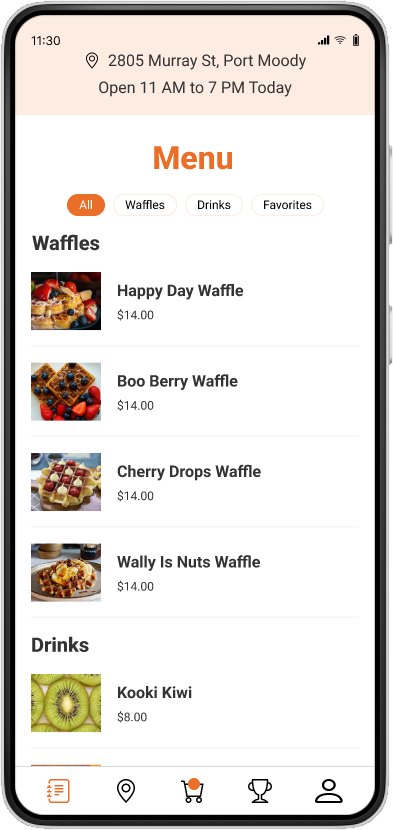
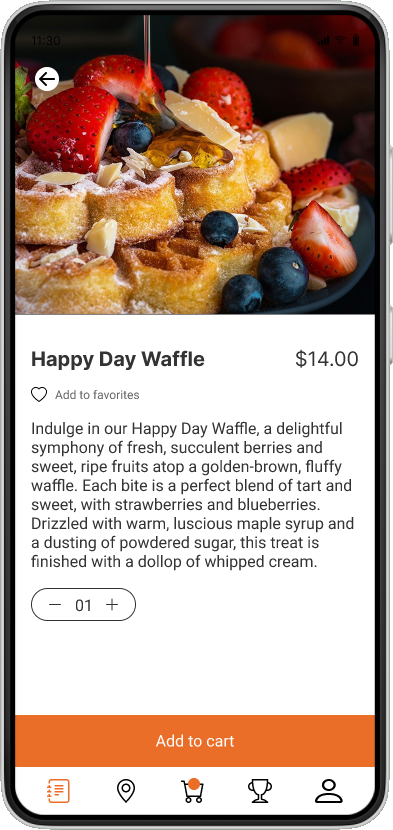
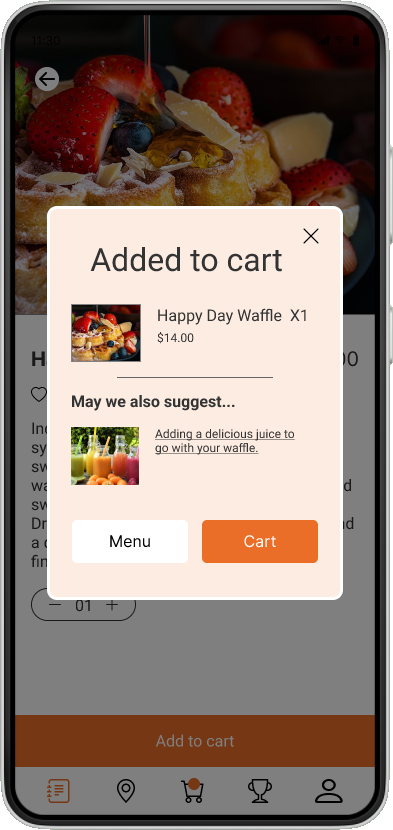
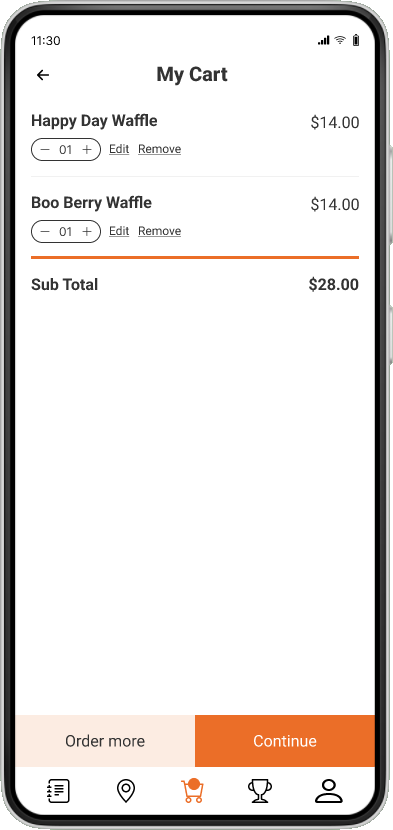
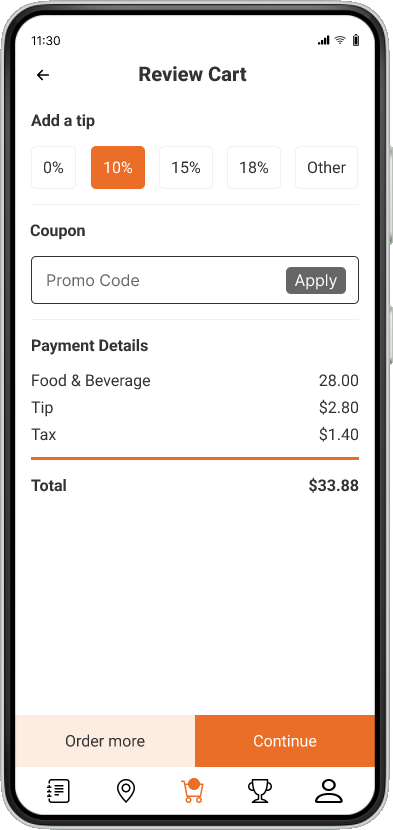
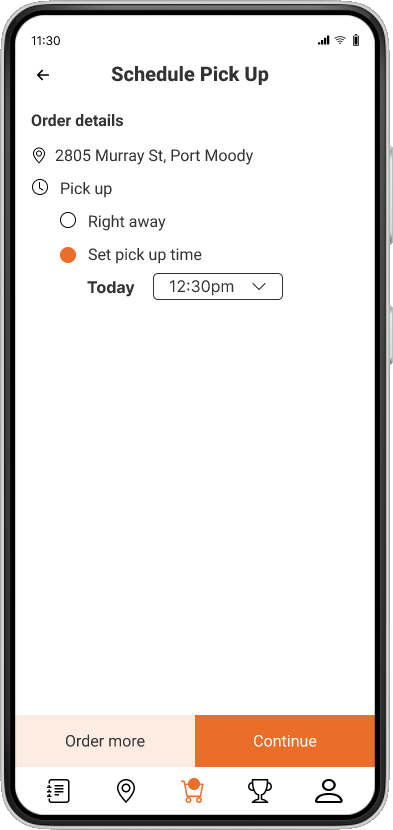
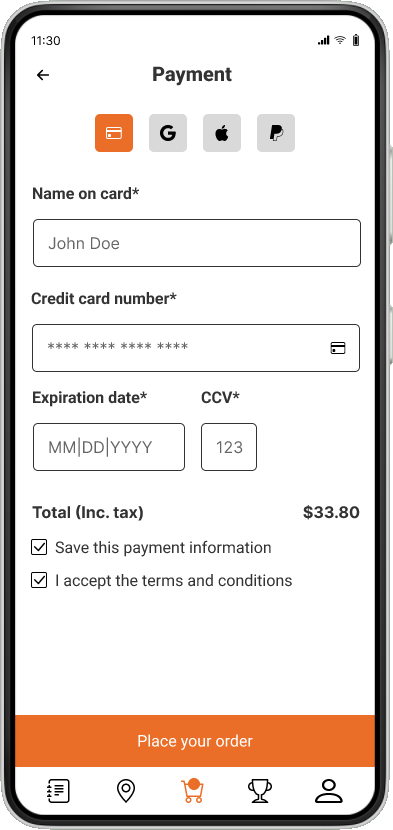
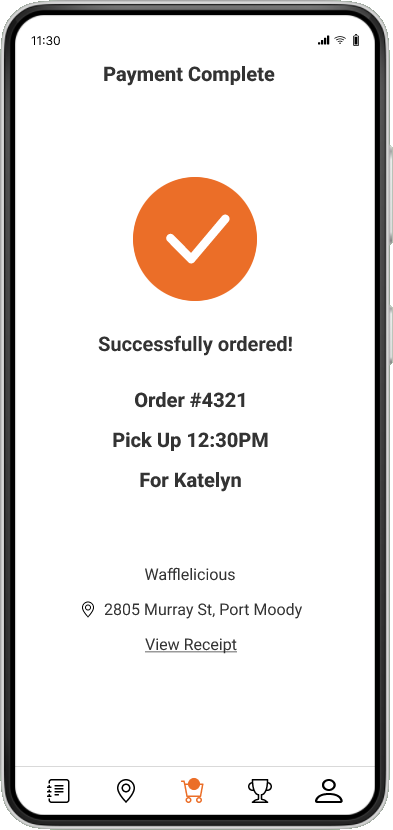
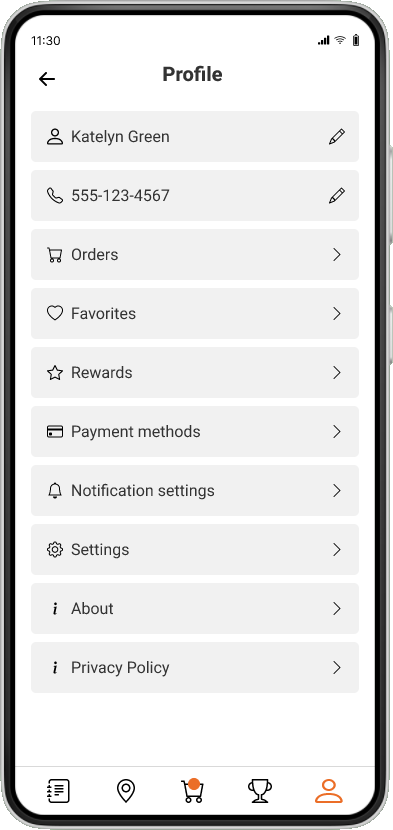
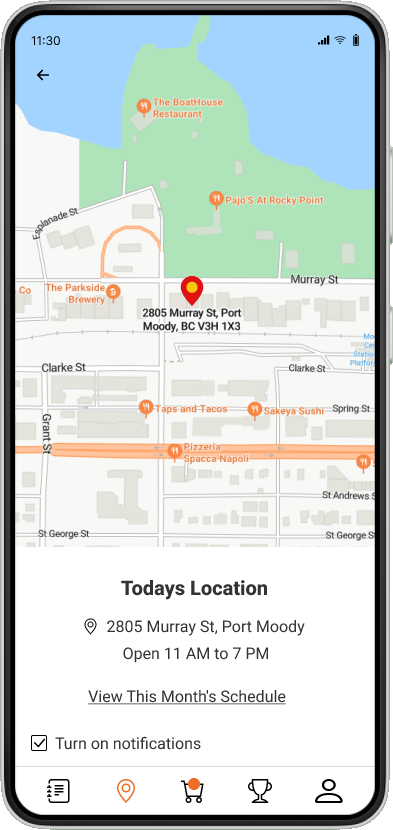
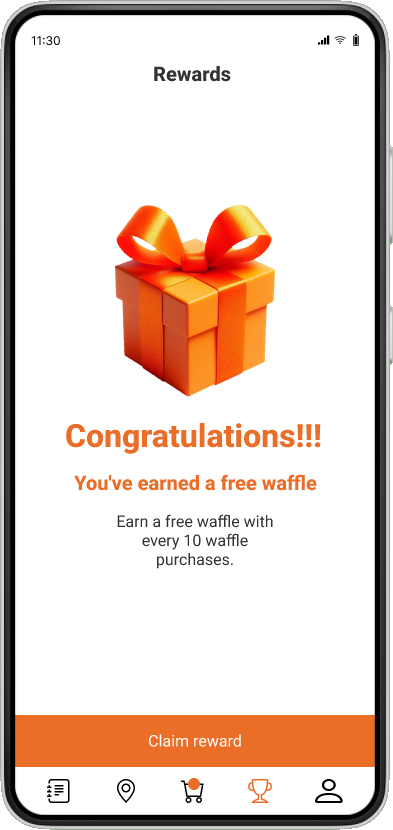
Going Forward
Takeaways
Prepaying and scheduling pick-up eliminate waiting in line to order, saving customers valuable time, especially when they’re on a tight schedule. Knowing they aren’t faced with a long wait, customers are likely to order more frequently.
Pre-orders allow staff to prepare waffles efficiently, reducing wait times and overall order fulfillment time. Additionally, this streamlining allows for more time to manage in-person sales.
The combination of improved customer service and the ordering process is expected to result in an increase in customer satisfaction, sales, and overall profits.
Next Steps
Monitor sales
While in-person sales are expected to remain the primary source of orders, it is expected that app-based sales will contribute to an increase in overall sales. By monitoring the figures for both the app and total sales, we will be able to gauge the app’s success.
Monitor app usage
Download and usage numbers will serve as valuable metrics for gauging customer adoption and validating the app’s development.
Iterate based on performance metrics
The analytics, sales performance, and customer feedback findings will provide us with a road map for future adjustments to the ordering app.